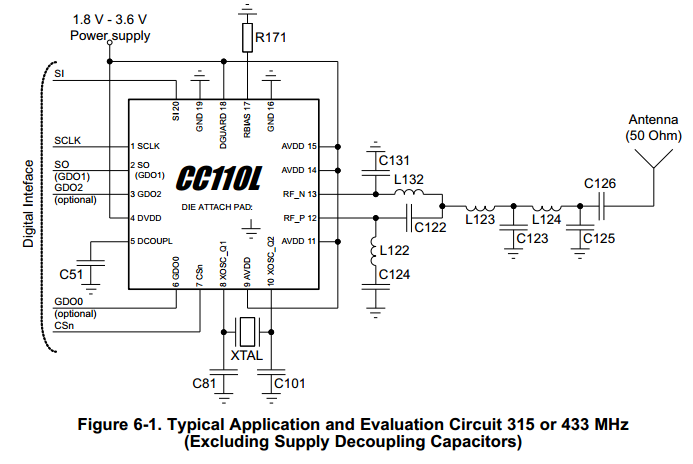I decided to have a go at RF voodoo. Partially because of work, partially because of my own interest. I think I will be implementing a transceiver based on TI CC110L chip to communicate in 433MHz ISM band.
They have a nice reference schematic in the datasheet:

Values of the passives are:
C122=3.9p
C123=8.2p
C124=220p
C125=5.6p
C126=220p
L122=27n
L123=22n
L124=27n
L132=27n
The only piece of information I've found about CC110L impedance is:

The questions I have so far are:
1) chip's RF port impedance
Datasheet says in 'RF Transmit' section that differential impedance as seen from RF port towards the antenna is 116+j41 ohms. How am I supposed to understand that? Is that the impedance of internal LNA? (PA outputs and LNA inputs are tied together). If so, then what's the impedance of the PA in transmit mode?
They state, that C131, L132, C122 and L122 for a balun that also mathes the differential impedance of the chip to 50 Ohm antenna, and other components (L123, L124, C123 and C125 are a filter). So how did they calculate the balun component values? I've calculated all the complex impedances of all the components and then tried various variants in FreeMat, but simnply nothing adds up.
Also, most of the smith chart applications somehow omit the possibility of RF source hacing other impedance than 50+j0.
I'd be really grateful for any hints or sources that I could use, because I'm totally lost on this one.